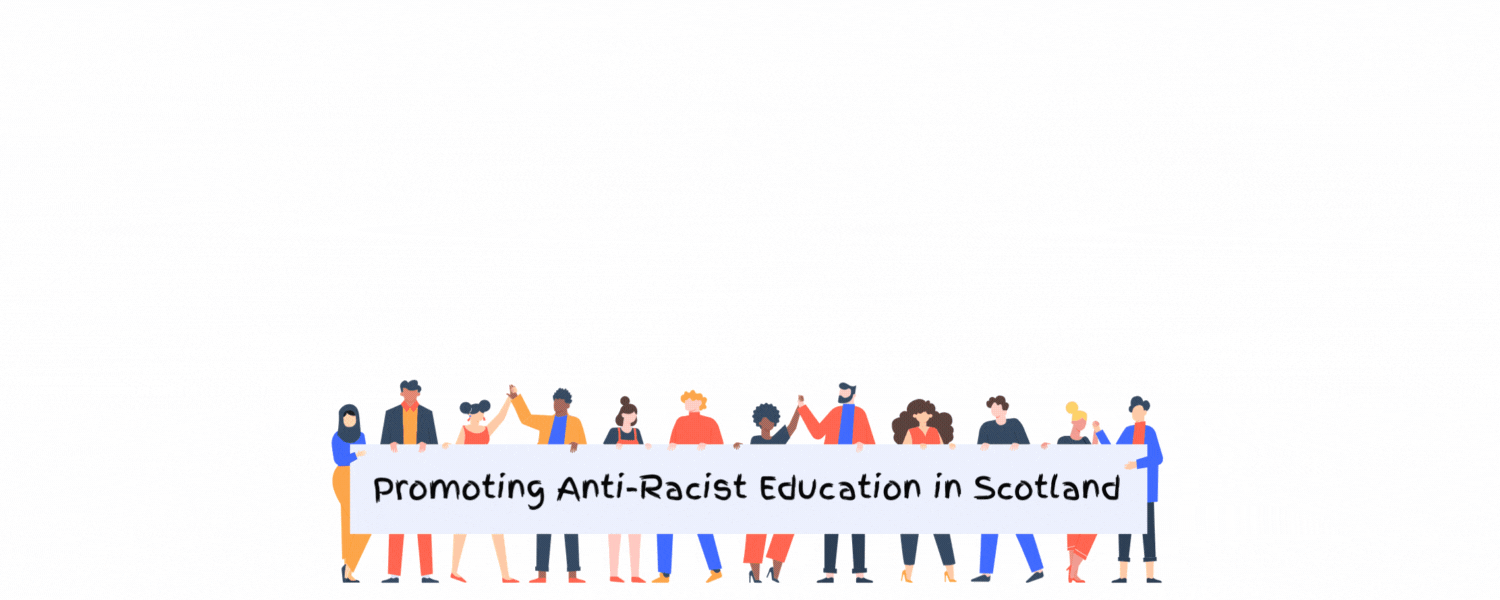Research into the experiences of Minority Ethnic learners over the last two decades has been limited but suggests that for these learners, even if they are not part of a visible minority, racism is a part of everyday life. (‘Minority Ethnic Pupils’ Experiences of School in Scotland’, ‘The Perceptions and experiences of Black, Asian and Minority Ethnic young people in Scottish schools’)
Hopkins et al studied 328 young people from a range of ethnicities, including white Scottish, who were living in Scotland. They found that the vast majority of the young people in the study were positive about ethnic and religious diversity; many had strong inter-religious and multi-ethnic friendship groups although some groups were more segregated. In terms of racism, Minority Ethnic young people described ways in which they were categorised and seen as ‘Other’ by accent, colour, faith, dress, nationality and ethnicity. Racial slurs were experienced as well as more recently recognised forms of racism such as islamophobia (anti-Muslim prejudice), anti-immigration attitudes and religious intolerance. The Minority Ethnic young people felt they had not experienced much overt racism but they all could give many examples of everyday racism that they had witnessed. Many described microaggressions and the subtle ways that they were made to feel different by tone of voice or attitude. Overt racism was most often experienced in public places where perpetrators had been drinking or taking drugs. In schools, racist comments were more common in primary and lower secondary stages. Experiencing anti-Muslim racism was also described by some participants; this was felt to be gendered as the wearing the hijab or niqab by girls was a more visible marker of being Muslim.
Minority Ethnic young people born in Scotland had a strong sense of Scottishness but some found that because of their skin colour they were not perceived as Scottish. For example a British Bangladeshi youth shared:
‘They have said ‘go back to your own country’ and I’m like ‘this is my country, I’ve been, I’ve been living here all my life.’
(Hopkins 2015, P.20)
Such experiences of racism sometimes eroded young people’s sense of belonging, making them feel excluded and alienated.
|
|
Arshad and Moskal found misrecognition to be a common experience for young people; misrecognition involved people making assumptions about someone based on their skin colour or national origins. One Asian boy, for example, was often assumed to be Muslim whereas he was Catholic. Arshad and Moskal argue that countering these assumptions on a regular basis is corrosive and can impact on wellbeing:
‘The energy that it takes to counter or only live with constant misrecognition is unlikely to be fully understood by those who do not experience such daily invalidations.’
In a questionnaire to one hundred Scottish Muslim children and young people, Dean found Islamophobia (anti-Muslim prejudice) common but incidents were unlikely to be reported to teachers. Learner confidence in teachers dealing effectively with these incidents was low.
Intercultural Youth Scotland (IYS) instigated an online survey of 110 Minority Ethnic young people from Scottish secondary schools which found that males were much more likely than females to agree that their school promoted a welcoming and diverse culture. More than half of males and a higher proportion of females felt that other learners did not understand their culture, heritage or background. Many of the respondents did not feel that staff understood their culture, heritage or background (63.7% of female respondents and 40% of male respondents). Additionally more than half of female respondents didn’t feel teachers understood the challenges related to racism and discrimination. More than 40% of respondents (40.3% female and 43.3% male respectively) agreed or strongly agreed with the statement ‘Teachers at my school denied that people from a BAME background face extra obstacles’ suggesting that many learners did not feel that their teachers understood the impact of the racism being faced by Minority Ethnic learners.
Eastern Europeans similarly experience racism from ‘everyday racism’ such as name calling, ‘jokes’ and ‘friendly banter’ over accents, appearance or country of origin, to physical attacks on young people, their family members and damage to their homes or property. These incidents include face-to-face and online attacks.
A history of racism against the various groups of Gypsy Travellers has been documented over time. A study of Traveller children in primary schools in Glasgow and London found that they experienced wide-ranging forms of racist, prejudiced and discriminatory attitudes both in their local community and in school. It was felt that teachers’ lack of knowledge of Traveller culture compounded the problem. A recent study of Gypsy Traveller female learners who live in Scotland found that the negative experiences of most centred around both racism and gendered expectations. They experienced racism and bullying by both peers and school staff and gender discrimination, fear and a lack of trust from school staff.
In a recent consultation by IYS on racism and mental health, a consultation was held with eight Minority Ethnic young people aged 14-20 and feedback was gathered from counsellors who are involved in their Mental Health service. It found that,
‘Encountering racism and hearing about racism against others had a clear negative impact on many of the children and young people’s mental health. This manifested in various ways, including feelings of isolation, hurt, anger, loss of motivation; constant worrying; hypervigilance; unsettlement; and self-doubt.’
Due to the small sample sizes, care must be taken with generalising from these studies.
More information on the ways that Minority Ethnic children and young people experience racism is available here.


